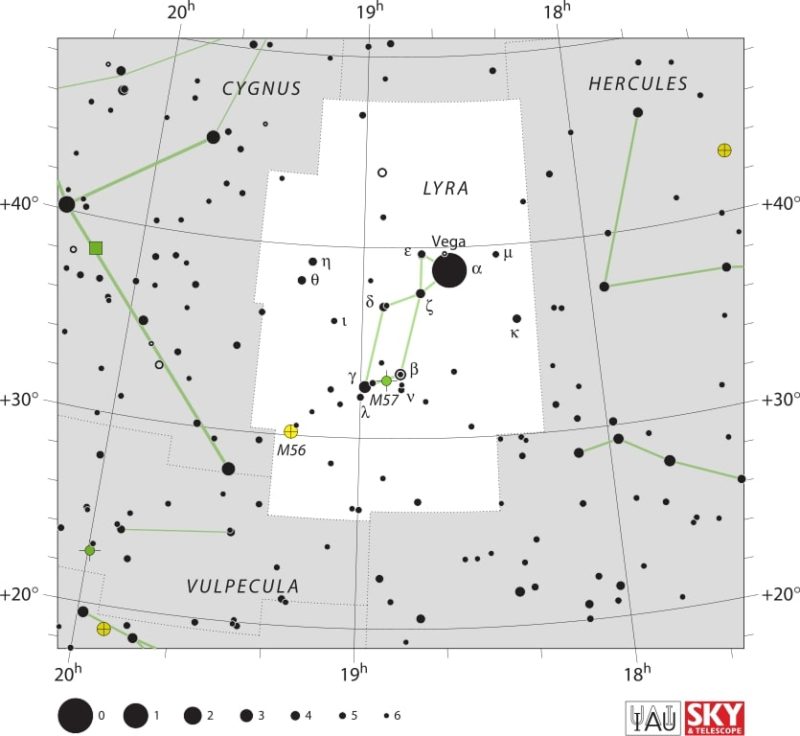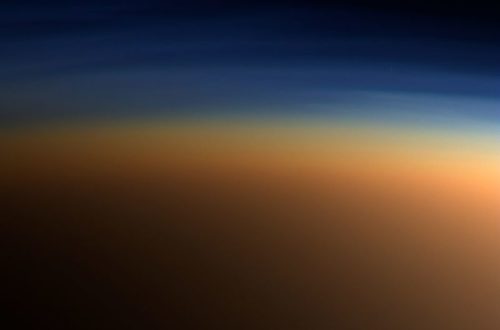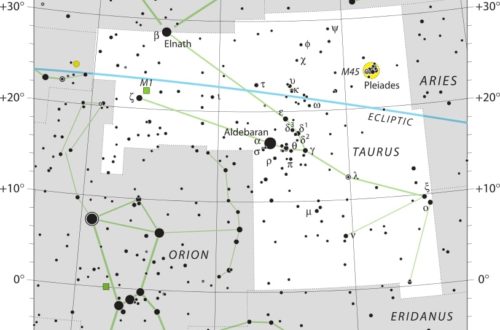Lyrid Meteor Shower 2025: When, Where & How to See It

The Lyrid meteor shower is one of the oldest known meteor showers, offering a dazzling display of shooting stars each April. It’s at its peak around April 22, when you can catch up to 18 meteors an hour in clear, dark skies.
These meteors are extremely quick and very bright, frequently leaving a glowing wake in their path as they zip through our atmosphere. The Lyrids came from the debris of Comet C/1861 G1 Thatcher.
Record keeping witnessed that for more than 2,600 years, stargazers have enjoyed this incredible annual celestial event. For the greatest chance of seeing this shower, look after midnight and away from city lights.
It’s an amazing opportunity to engage with the night sky! Here’s a look at what makes the Lyrids so special and how you can make the most of this cosmic light show.
What is the Lyrid Meteor Shower?
The Lyrid meteor shower is one of the oldest recorded astronomical events, illuminating the vast expanse of the spring sky every April. The event is from April 16 through April 25. It typically peaks on the night of April 22, into the early morning of April 23. Skywatchers can expect to see around 18 meteors per hour at the peak, under ideal conditions.
What to expect with the Lyrid meteor shower? Known for their speed and brightness, Lyrid meteors frequently produce long, bright, lustrous trains in a dark, clear sky. Remarkably, up to one-in-four of these meteors leave behind a visible streak, known as a train, that can last several seconds. Sometimes the Lyrids surprise people with fireballs—extremely bright meteors that light up the ground and create quick shadows.
This meteor shower is one of the most ancient observed meteor showers. Ancient China was writing about it as early as 687 BC! In the centuries since, cultures across the world have recorded the shower’s behavior, usually associating the meteors with portents from the skies or festivals of springtime.
The Lyrid meteor shower is directly connected to the comet C/1861 G1, or Thatcher. That’s because the comet was first discovered by Alfred E. Thatcher back in 1861. As Earth crosses the debris trail left by this comet, meteoroids enter our atmosphere and create the brilliant streaks visible to us.
The Lyrids are a little special as their radiant point is near Vega, the bright star of the Lyra constellation. They have one last incredible quality, a unique capacity to sometimes deliver big bursts of meteoric activity. These features, along with its deep-rooted history with humanity, make the Lyrid meteor shower a welcome springtime treat.
Causes of the Lyrid Shower
The Lyrid meteor shower is associated with long period Comet C/1861 G1 Thatcher. This long-period comet which can be seen with binoculars takes approximately 422 years to make one orbit around the sun. The comet that is responsible for this meteor shower was discovered in the 19th century.
Today, it is still important for it now leaves a vast trail of dust and debris that Earth plunges through every April. It’s this interaction that creates the colorful streaks of light we can see across the night sky. The comet is now on an orbit that carries it far from the sun. Its legacy continues to influence one of the oldest-documented meteor showers.
Comet Thatcher’s Legacy
In 1861, amateur astronomer A.E. Thatcher discovered what would come to be known as Comet Thatcher. It lit up the night sky with an impressive brightness of 7.5 magnitude — too faint to detect without a telescope. Every 417 years, its highly elliptical orbit takes it closer to the sun.
As it travels, this passage releases particles of dust and ice, producing a debris field. It is this comet that has the best-documented history of impacting meteor activity. Once every 60 years, additional, larger outbursts occur, caused by changes in planetary gravity that nudge its dense dust trail into Earth’s path. This temporary phenomenon further demonstrates the significance of comet C/1861 G1 (Thatcher) to meteor science.
Debris Trail Explained
The debris trail consists of tiny dust particles and rocky fragments ejected by Comet Thatcher during its approach to the sun. As these particles fly into Earth’s atmosphere at incredible speeds, they burn up at extreme heat that produces the brilliant streaks that we know as meteors.
Changes in the trail’s density affect meteor rates, creating a difference in activity of some years versus others.
Earth’s Orbital Intersection
Earth crosses the Lyrid meteoroid stream each year, with the peak activity occurring around mid-April. Orbital dynamics and Earth’s position relative to the debris trail cause the intensity and visibility of the shower to vary.
When to Watch the Lyrids
The Lyrid meteor shower, one of the oldest recorded meteor displays, is always a spellbinding celestial phenomenon. Observing it at the right time is key to experiencing its beauty to the fullest.
The Lyrids happen every year from April 16 to April 25, with peak activity around the night of April 22. Carefully timing your observations within these dates will give you the best opportunity to see Lyrids meteors zipping through the night sky.
Peak Viewing Times
In 2025, the Lyrids will be peaking on the night of April 22 into the early morning hours of the 23rd. To maximize your viewing experience, enjoy the peace and quiet of the pre-dawn hours.
It is important to remember that meteor activity varies, and rates are usually higher nearer the peak. Focusing your viewership within this time frame will give you a much better chance at seeing more meteors.
Hourly Rate Expectations
The Lyrids are considered a more modest meteor shower, with 18 meteors per hour.
With some patience you can even see the larger bursts break this range for a truly special experience.
Factors Affecting Visibility
Whether you see them or not will depend on a few factors—like moonlight, light pollution, and cloud cover. The waning crescent moon present in 2025 will not impede visibility too much.
Watching from dark country skies with little to no light pollution and a clear view of the sky makes a big difference.
Where to View the Lyrid Shower
Finding Dark Sky Locations
Viewing in dark sky areas improves your meteor-watching experience by reducing the impact of man-made lights. Check out helpful tools such as the Dark Sky Map to locate ideal sites.
Planning ahead is key, especially when the Lyrid shower lands on or near weekends, as desirable viewing locations fill up quickly. Plan on camping or visiting remote areas with low light pollution overnight to make the most out of your Lyrids.
Radiant Point Location
The Lyrid meteors get their name from the radiant point in the constellation Lyra, close to where you will find the bright star Vega. Although meteors can zip through any area of the sky, if you concentrate on the direction of Lyra, you’re more likely to catch the meteors.
Northern vs. Southern Hemisphere
Those in the northern hemisphere will be able to enjoy the best views, particularly at midnight when Vega is high in the sky. For our viewers in the southern hemisphere, the radiant stays even lower in southern skies, making for a more limited display.
Make sure to fine-tune these observations to suit where you’re looking from for optimal viewing!
How to Observe the Lyrids
Prepare for Meteor Watching
A little preparation is all that’s needed for a successful and enjoyable observation. First, look at your local weather report so you can be sure there are clear skies.
Dress warmly in layers — nighttime temps can dip, and blankets or reclining lawn chairs will add comfort and warmth. A thermos full of your favorite hot drink goes a long way to improving the experience in those cool, quiet hours before dawn.
Essential Equipment
Though the Lyrids can be experienced with just your eyeballs, simple tools of the trade can enhance your outing. If you have some binoculars or a small telescope, that’ll allow you to see even more meteors and get a better view of the night sky.
A star chart or a smartphone stargazing app will help you find Vega, which is the Lyrids radiant point. If photographing the event sounds appealing, pack a camera with manual controls to do some long-exposure photography.
Viewing Techniques
If you want to see the most meteors, it takes patience and a little planning. Allow your eyes at least 15–20 minutes to adjust to the dark. After that, look all around the sky, not just in one area.
Relax, lie back, and take in the expansive view, as meteors can appear sporadically, about one every three minutes on average at peak.
Patience is Key
Meteor watching is an art that requires patience and practice. Soak in the peaceful atmosphere. Walk at your own pace, and enjoy the peace that comes from watching the wider beauty of the starry sky.
Conclusion
The annual Lyrid meteor shower is one of the best stargazing events to catch. Yet, it invites you to engage with the universe in a manner that can feel so vast yet personal. The experience of seeing the streaks of light dance across the night sky is easy, beautiful, and fulfilling. You don’t need fancy equipment or a special location, just clear skies, a little patience, and some time away from city lights.
Whether you’re a first time stargazer or a lifetime astronomy explorer, the Lyrids are sure to bring something breathtaking to enjoy. So mark your calendar, grab a blanket, and take your seats to witness this classic cosmic performance.
Frequently Asked Questions
What is the Lyrid Meteor Shower?
The Lyrid meteor shower is an annual meteor shower caused by debris from the comet Thatcher burning up in Earth’s atmosphere. This produces stunningly bright streaks of light, called meteors, in the night sky.
When is the best time to watch the Lyrids?
The Lyrids are an annual shower, peaking around April 22. As with many astronomical events, the best viewing times are usually after midnight, in clear, dark skies far away from light pollution.
Where can I see the Lyrid Meteor Shower?
To get the best view possible, go to a dark, open space away from city lights and face the direction of the Lyra constellation.
How many meteors can I expect to see during the Lyrids?
At peak times you can expect to see 18 meteors per hour. Sometimes, the Lyrids pull a fast one on us, treating skywatchers to a few hours of higher-than-expected activity.
What causes the Lyrid Meteor Shower?
The Lyrids are produced when Earth passes through the dust trail left by comet Thatcher. These particles burn up in our atmosphere, creating the beautiful meteor streaks we observe.
What makes the Lyrids unique?
The Lyrids are one of the oldest recorded meteor showers, having been observed for more than 2,600 years. All the better for observing lies in their meteors, which are famous for leaving bright trains that can persist for many seconds.
See also:
- Next meteor shower: Pi Puppid Meteor Shower
Would you like to receive similar articles by email?





